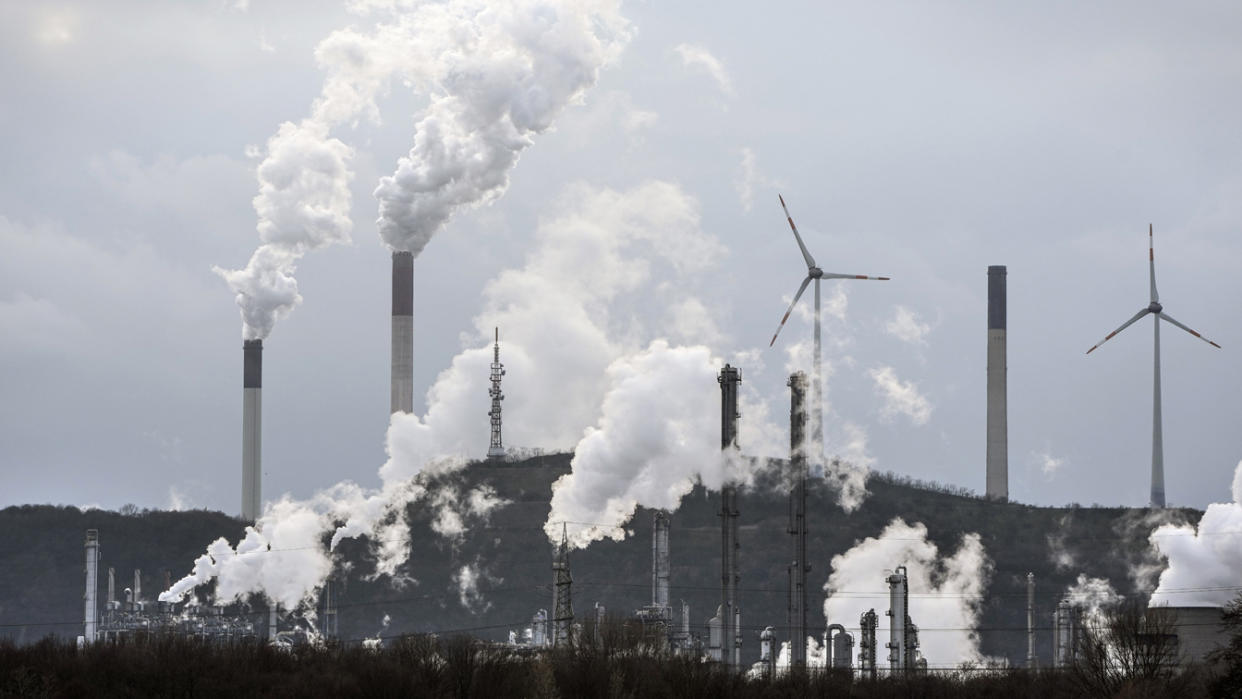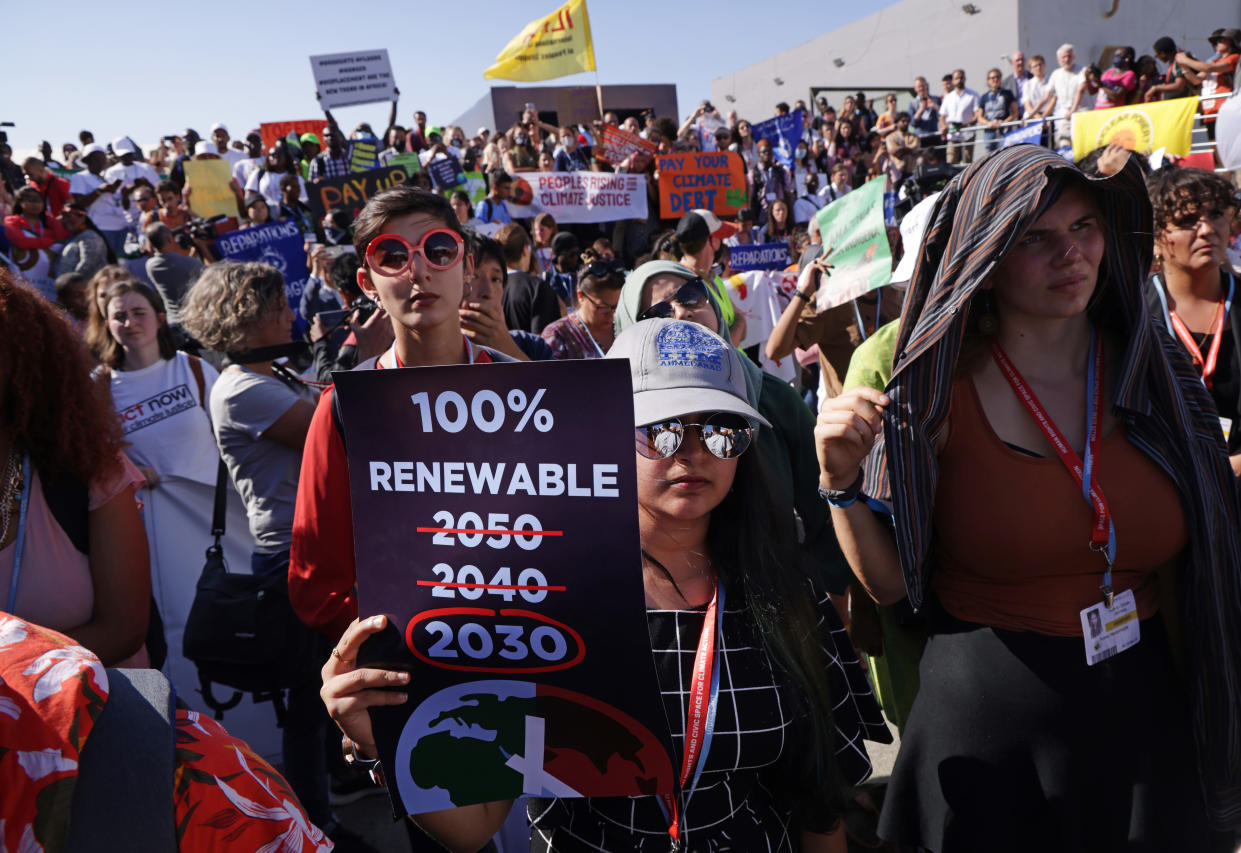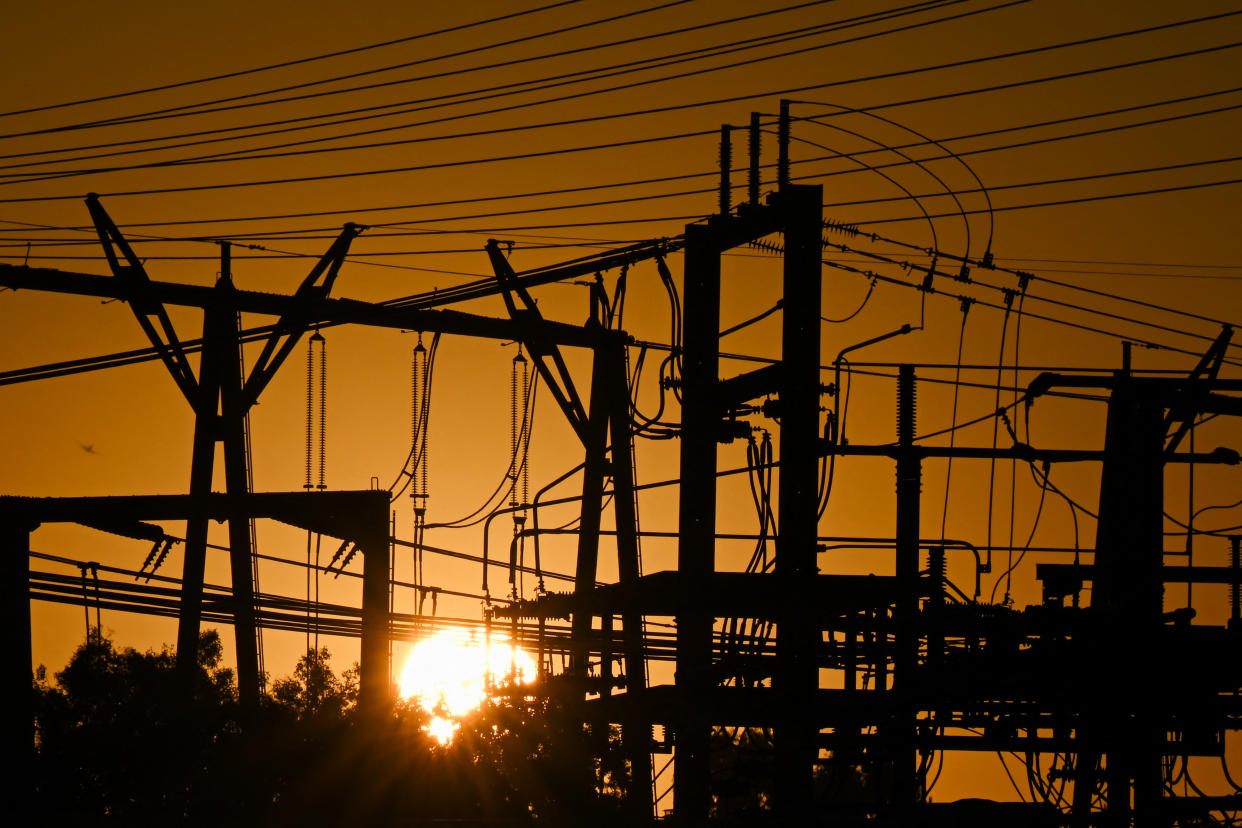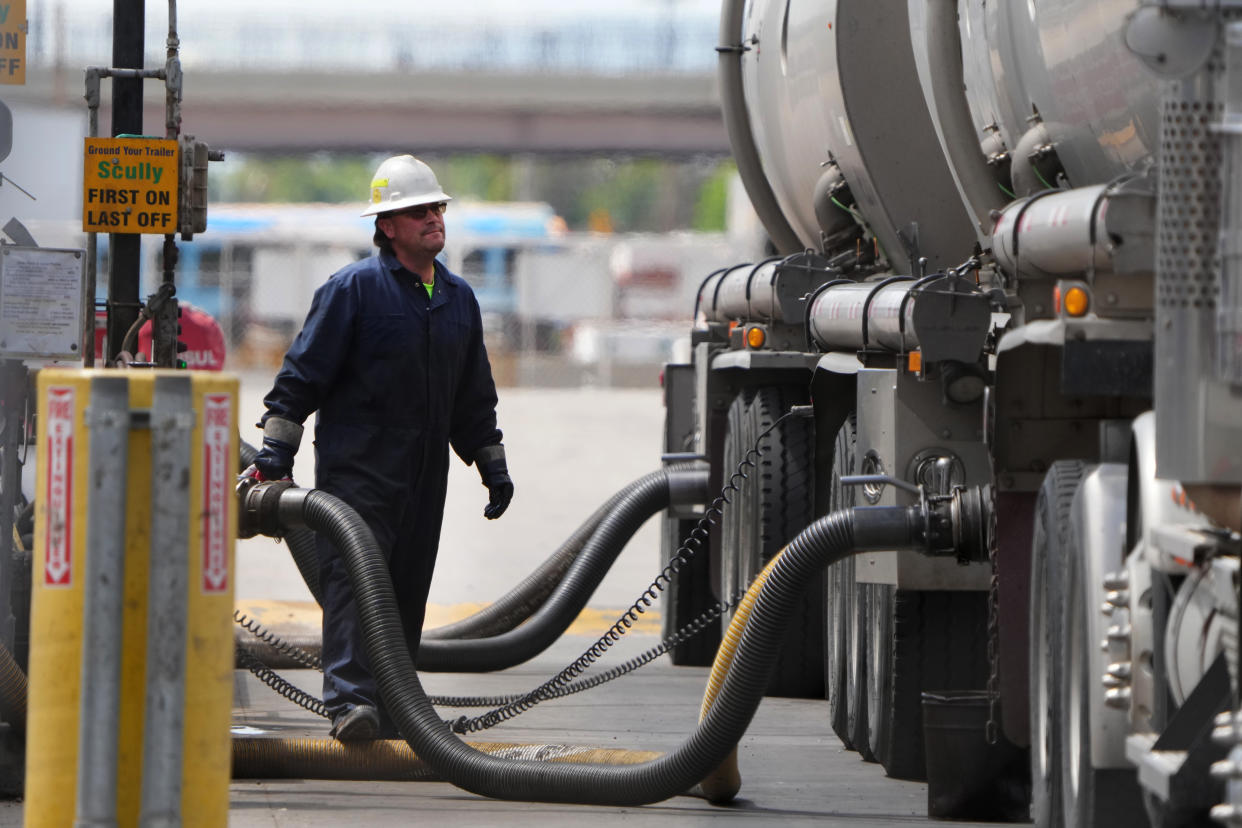Key takeaways from the U.N. ‘climate time-bomb’ report

The world has an even tighter timeline for avoiding catastrophic climate change, according to the latest report from the United Nations Intergovernmental Panel on Climate Change. The sixth “synthesis report,” released Monday, used findings from three expert assessments published between 2021 and 2022 to give a concise brief for policymakers as they prepare for the next round of climate negotiations.
In order to focus national leaders on the short-term action needed to avoid breaching 1.5 degrees Celsius (2.2 degrees Fahrenheit) of global warming — which the IPCC has previously identified as the threshold for a cascade of devastating consequences — the scientific body set an ambitious new target for slashing the greenhouse gas emissions causing warming: a 60% reduction in annual greenhouse gas emissions by 2035.
While the IPCC, which is affiliated with the U.N., had previously called for a 43% cut by 2030 and for the world to reach net-zero emissions by 2050, meeting this new target will require even more aggressive action in this decade.
If the goals for 2030 and 2035 aren’t met, the IPCC warns, the 1.5°C threshold will almost certainly be breached, with effects such as widespread food insecurity due to more extreme heat waves and droughts.
“The climate time-bomb is ticking,” said U.N. Secretary General António Guterres in a statement Monday morning. “But today’s IPCC report is a how-to guide to defuse the climate time-bomb.”
Here’s a breakdown of key points and takeaways from the report.
If emissions aren’t cut this decade, catastrophic climate change is all but guaranteed

Short of significant decreases in emissions by 2030, the world will at least temporarily blow past the 1.5°C threshold. “If the annual CO2 emissions between 2020–2030 stayed, on average, at the same level as 2019, the resulting cumulative emissions would almost exhaust the remaining carbon budget for 1.5°C, and deplete more than a third of the remaining carbon budget for 2°C,” the report states.
The “carbon budget” is the amount of carbon that can still be emitted before reaching 1.5°C. Without immediate action to cut emissions, the IPCC projects, it will be all gone by the end of the decade.
“There is a rapidly closing window of opportunity to secure a livable and sustainable future for all,” the report states.
The 2030 deadline for taking action to reduce emissions has been raised by the IPCC before. Rep. Alexandria Ocasio-Cortez, D-N.Y., famously mangled its message in 2019, when she hyperbolically said that young Americans worry “the world is going to end in 12 years if we don't address climate change."
If we don’t cut emissions before 2030, the world won’t suddenly come to an end, according to the IPCC, but the world will experience a variety of adverse changes.
The timeline matters, not just the end goal

All the projections in the latest IPCC report assume certain emissions pathways. In other words, when the IPCC called for a 43% reduction in emissions by 2030, it was assuming that we would get there gradually, with emissions peaking in 2025 at the latest and being reduced each year in the second half of the decade. Likewise, it would not be acceptable to hit net zero in 2049 after years of high emissions: The climate pollution needs to be steadily dropping on the way there.
Now, the IPCC has calculated that we need an especially steep emissions drop in the early 2030s. That may sound like a long way off, but it’s actually immediately relevant, since the policies that determine how much oil, gas and coal will be burned 10 years from now are being made today.
“A lot of emissions actually come from infrastructure — gas-fired power plants and pipelines, or whatever — and so the current benchmark that we have, 2030, is beginning to be a little irrelevant, because that’s only seven years away,” an expert reviewer of the report told Yahoo News. “The people working on massive capital projects work on longer timelines, so at this point you need to know: What’s the deal by 2035?”
The longer the world waits to cut emissions, the deeper the cuts will need to get

Current national pledges to limit future emissions have the world on course for a projected 10.6% increase in emissions by 2030, nowhere near the goal of a 43% decrease set forth by the IPCC. Last year, global emissions grew 0.9%, according to the International Energy Agency.
Emissions are cumulative, so continuing to increase emissions in the next few years means faster, deeper cuts are needed in later years. With each passing year, the window of time in which later action can avert catastrophe gets smaller.
“These numbers only make sense if you've already met your 2030 goals, because it's a pathway you're supposed to be on,” Kaisa Kosonen, senior policy adviser at Greenpeace Nordic, told Yahoo News. “In reality, if you miss your 2030 target, you have virtually no carbon budget left, and you need much more cuts by 2035.”
Cutting emissions more deeply in a shorter amount of time would be more difficult and more expensive. That’s why the IPCC is providing the new 2035 benchmark to underscore the need for more action now.
“They're saying this is the least costly pathway,” the expert reviewer explained. “Emissions could peak in 2028 or 2029, but if you wait that long, it becomes economically ruinous to get on the pathway.”
Overshooting 1.5C of warming would have major impacts

“It shows that if we overshoot, the impacts are catastrophic,” Lili Fuhr, deputy director of the Climate & Energy Program at the Center for International Environmental Law in Berlin, told Yahoo News about the report.
Fuhr notes that climate change feedback loops may be triggered, according to the IPCC, above 1.5°C of warming, and especially above 2°C. For example, a forest that currently absorbs and stores carbon dioxide could begin experiencing so many more severe wildfires and increased heat and drought that it ends up giving off more carbon than it takes in, making climate change worse. Or ice sheets that currently reflect heat could melt and cause the ocean to absorb the heat instead.
“At sustained warming levels between 2°C and 3°C, the Greenland and West Antarctic ice sheets will be lost almost completely and irreversibly over multiple millennia, causing several metres of sea level rise,” the IPCC report states.
The world has already warmed 1.1°C (2°F) since the Industrial Revolution, and it is experiencing effects including more frequent and severe heat waves, droughts and wildfires, as well as heavier rains, more powerful hurricane winds, causing hundreds of deaths and tens of billions of dollars in damages every year — with the toll steadily rising — in the United States alone, according to the National Oceanic and Atmospheric Administration.
“Right now, climate change is catastrophic for a few people in a few places, like Hurricane Harvey,” the expert reviewer said, referring to the 2017 Category 4 hurricane that devastated Texas and Louisiana, which scientists have linked to climate change.
If 1.5°C is breached, the IPCC reports, it will mean "widespread catastrophe for many people and many places," the expert reviewer said.
Fossil fuel development has to stop

The IPCC finds that if existing and currently planned fossil fuel infrastructure, such as coal-fired power plants and oil and gas wells, live out their currently planned lifespan, it will emit enough greenhouse gases to warm the planet by around 2°C by the end of this century.
Some may fantasize about continuing to use fossil fuels while reducing warming by sucking carbon dioxide out of the air and storing it underground later in this century, when the technology is more advanced and affordable, but the IPCC finds that would be too late.
“There are a lot of pathways that are pointed out that assume we can overshoot [1.5°C] and return below it from carbon removal technologies,” Fuhr said. “But this report talks about the uncertainties and risks of such an approach. Carbon removal at large scale might not be feasible — ever. Plus because we're looking at this short time scale, the only way forward is focusing on the core drivers of the climate crisis, which is fossil fuels.”
The next round of climate negotiations

The IPCC is part of the U.N. Framework Convention on Climate Change, and all 195 UNFCCC member countries signed off on the report. Those same countries — essentially the entire world — agreed in the 2015 Paris Agreement to come together by 2025 to make a new round of pledges for cuts by 2035. So the 60% cut by 2035 laid out by the IPCC is meant to set that as the goal of the next round of pledges.
In an effort to spur the wealthiest countries, which are the largest emitters, to do their part, Guterres proposed a “Climate Solidarity Pact” last year to the G-20, in which the industrialized nations would take a new set of actions, such as phasing out coal-fired power plants by 2030.
On Monday, Guterres unveiled a proposal to “super-charge efforts” to advance the goals of the pact with new measures, such as leaders of developed countries moving up their net-zero goal dates from 2050 to 2040 and reaching net-zero power generation by 2035.
“We must move into warp-speed climate action now,” Guterres concluded in his Monday remarks. “We don’t have a moment to lose.”

